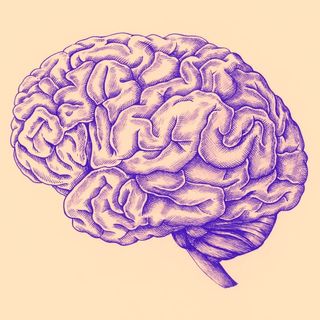
You Can Actually Die of a Broken Heart
Extreme emotion can cause a heart attack-like response.

Once upon a time in 2005, a woman named Verna went to the hospital with heart attack symptoms. Her doctors pored over her scans and records, but could not find an answer; she was otherwise healthy. What they did discover is that she had experienced the same kind of heart episode on the same day, every year, for seven years. In search of a diagnosis, they asked her and her husband what had happened the day of her first episode. Her husband recalls that their neighbor, Ted, died that day. Then, he wonders aloud what possible relevance Ted has to his wife’s heart problems.
His wife is silent, but her face makes it clear: she was in love with Ted and still feels deep grief.
This modern fairy tale, like all really good modern fairy tales, is courtesy of Grey’s Anatomy (the “Pick me. Choose me. Love me.” episode, for all you OG fans out there) which introduced the world to takotsubo cardiomyopathy, also known as broken heart syndrome, a rare condition that doctors are only now starting to understand.
Takotsubo mimics a heart attack; the symptoms are similar (chest pain and shortness of breath) and all tests will point in that direction, though no blockages will be found. It’s characterized by a sudden weakening of the heart muscles of the main pumping chamber of the heart, the left ventricle. This allows blood to pool in the chamber, causing it to balloon outward, giving the heart the appearance in scans of a Japanese takotsubo, or octopus trap.
Unlike a heart attack, however, most cases of takotsubo syndrome cause no permanent damage to heart muscles, and most patients recover within a week.
Related on The Swaddle:
What You Need to Know About Heart Disease and Heart Attacks in Women
Verna, if she were real, would be the 1 in 10 cases of broken heart syndrome that recur within a four year period. And while most cases, like Verna’s, are not deadly (it’s not a spoiler if it’s 14 years old), it is technically possible to die of a heart broken by grief; takotsubo syndrome is popularly (if not officially) considered the cause of death of actress Debbie Reynolds in 2016 — one day after the death of her daughter, actress Carrie Fisher.
Broken heart syndrome has also been recorded after intense shock (think: a surprise party) and in the face of fear (such as of public speaking. It can also result from trauma, as from domestic violence, a car accident, or a natural disaster; more than 20 cases of takotsubo syndrome were recorded in New Zealand in the weeks after a 2011 earthquake there that left 185 dead.
Despite its colloquial name, broken heart syndrome can also follow intense joy, such as that experienced during a child’s wedding, while meeting a friend after 50 years, after winning a casino jackpot, or when a favorite sports team wins a tournament, according to some participants in a 2016 study of takotsubo patients. Researchers estimate that 1 in 20 cases of takutsobo cardiomyopathy are actually triggered by positive emotions.
Takotsubo, first clinically recorded by Japanese doctors in 1990, is extremely rare. It’s much more common among women, especially between the ages of 58 to 75, than men. Research on animals suggests the drop in estrogen associated with menopause may put women more at risk. And takotsubo may, in fact, be more common than we think; some researchers estimate up to 5 percent of women treated for a heart attack are actually suffering from takotsubo syndrome.
The condition was thought to be a ‘stunning’ of the heart muscles in response to a shockwave of stress hormones. Now, a study published last week suggests insight into how: by interrupting communication between the “brain regions associated with emotional processing and the autonomic nervous system, which controls the unconscious workings of the body, compared to the healthy people,” explains Dr. Christian Templin, a professor of cardiology at University Hospital Zurich and the lead author of a study that analyzed MRI scans of the brains of 15 takotsubo patients.
This finding only points toward areas of more research, Dr. Templin says. Still, greater understanding brings us closer to better prevention. Which means we’re one step closer to a day when broken heart syndrome is more fiction than real.
Liesl Goecker is The Swaddle's managing editor.
Related


Pee Break Policies in Indian Schools Are Toxic for Children
